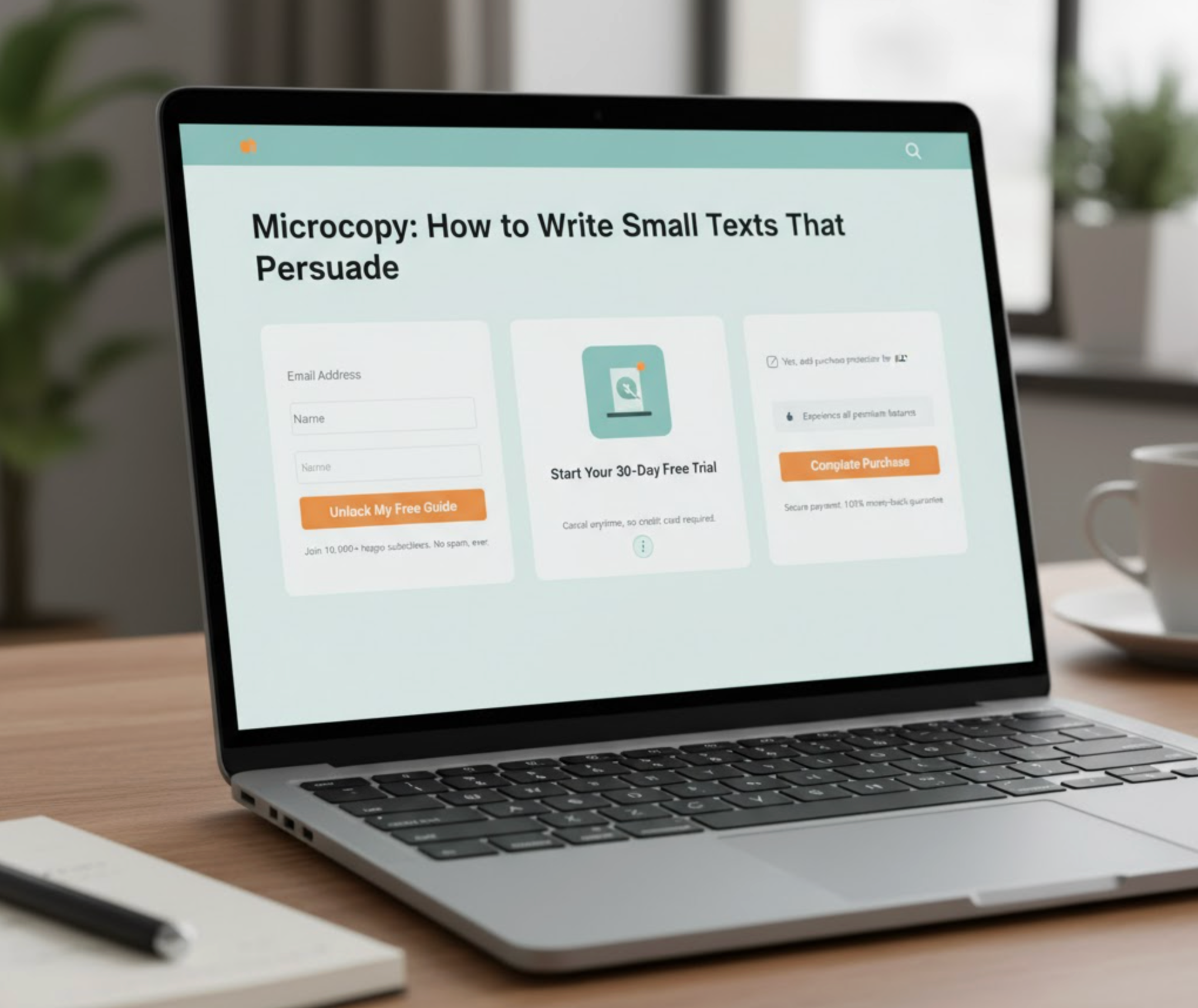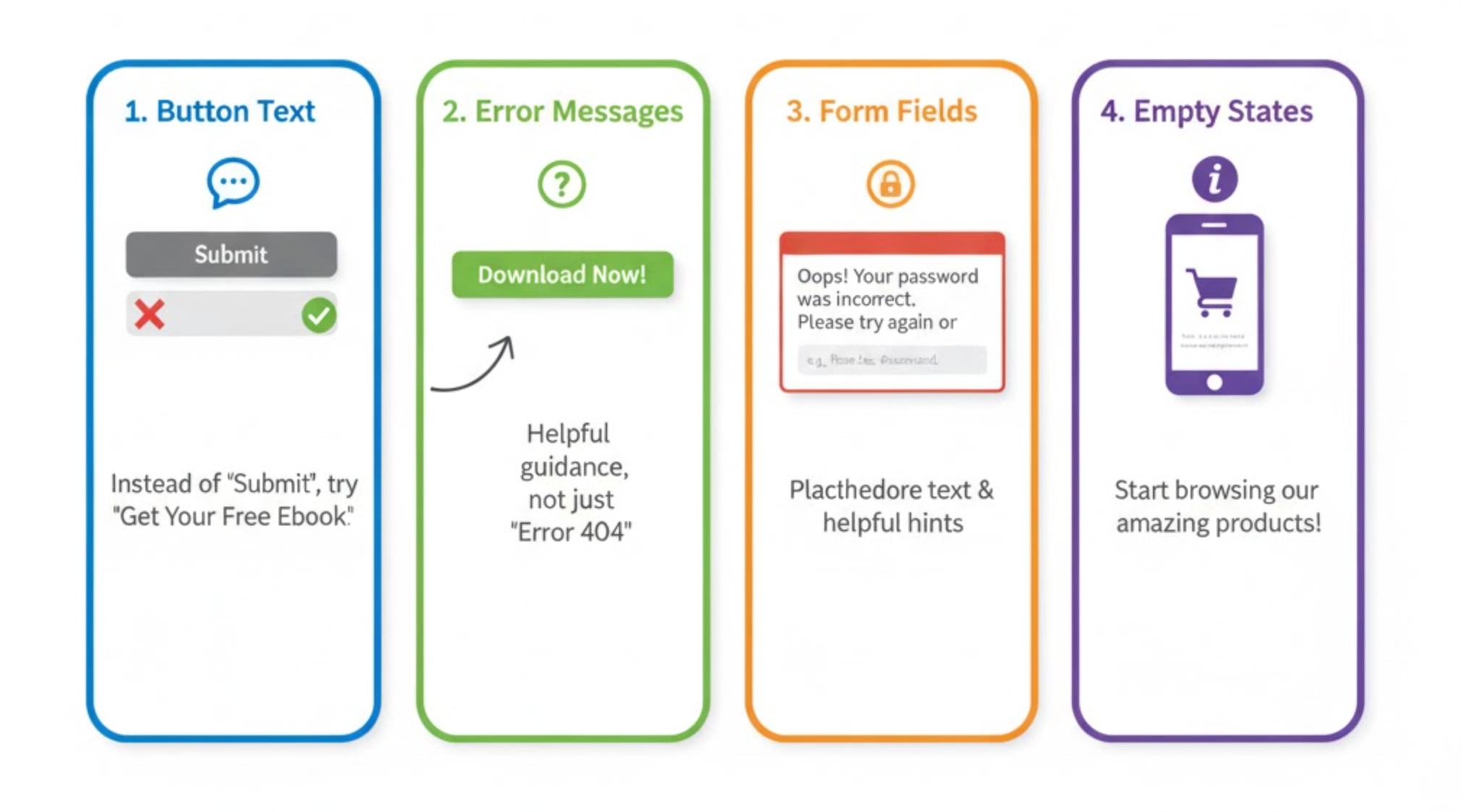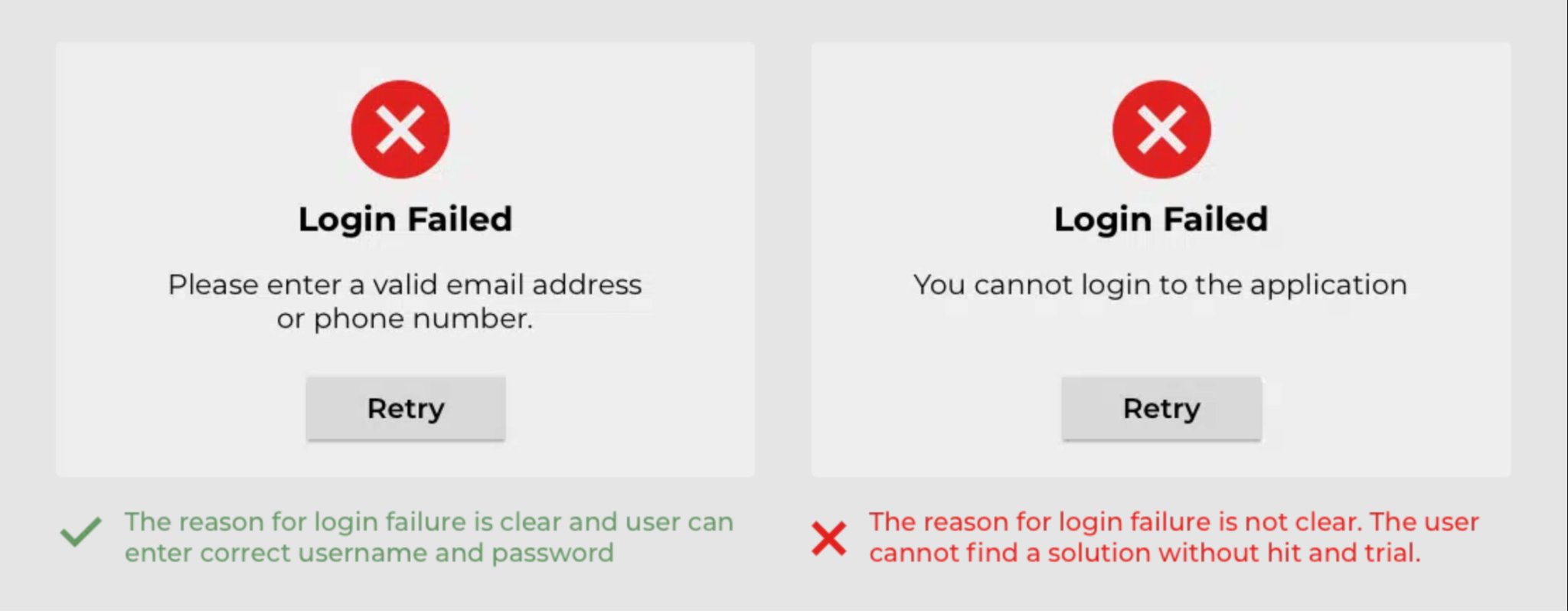
In the world of digital experiences, every word matters. While product descriptions and blog posts grab attention, it’s often the microcopy, those tiny bits of text in buttons, forms, tooltips, and messages, which truly shape user behavior. Great microcopy can make users feel guided, confident, and even delighted, while poor wording can lead to confusion or frustration. Let’s explore what microcopy is, why it’s important, and how to write persuasive microcopy that converts.

Microcopy refers to the small bits of text that appear throughout a website, app, or interface to help users take action or understand what to do next. It includes button labels, form instructions, error messages, confirmation notes, popups, and tooltips.
For example, instead of a bland “Submit” button, a microcopy like “Get My Free Trial” creates a stronger emotional pull. Microcopy helps users feel connected to the experience and confident about their decisions.
Even though it’s small, microcopy can have a big impact on conversions and user experience. It guides, reassures, and motivates users at key moments. The right words can turn hesitation into action and doubt into trust.
A well-crafted microcopy can:
When users feel understood, they are more likely to complete actions like signing up, checking out, or subscribing.

CTA buttons are often the most powerful place to use microcopy because they directly influence user action. A strong CTA should tell users exactly what happens next while sparking motivation or excitement. Using emotional or benefit-driven language like “Start My Free Trial” or “Add to Bag” helps users feel they are making progress toward their goal.

Forms can frustrate users if they’re unclear, so friendly guidance makes all the difference. A short hint or reassurance such as “We’ll never share your email” or “Enter a strong password with at least 8 characters” builds confidence and reduces errors. Good form microcopy also sets the right tone for your brand, helpful, honest, and human.

Error messages are critical moments where tone and clarity can prevent frustration. Instead of blaming users, write with empathy and direction, such as “Hmm, that email doesn’t look right—try again?” This shows that you understand mistakes happen and that you’re there to help, not criticize.

Empty states appear when a page or dashboard has no content, such as a newly created account. These spaces are valuable opportunities to encourage action with microcopy like “You haven’t saved any favorites yet, start browsing now.” Instead of leaving a blank screen, good microcopy motivates users and keeps them engaged in the journey.

Success messages provide closure and reassurance that an action worked as expected. When users finish a purchase, signup, or upload, celebratory microcopy like “Success! Your order is on its way” or “You did it!” reinforces a positive feeling. This not only confirms completion but also creates a sense of accomplishment and trust in your brand.
Writing a great microcopy isn’t just about choosing short words. It’s about communicating clearly, showing empathy, and guiding users through every step of their journey. Below are the essential principles and techniques that help you craft small but powerful messages that truly persuade.
Users shouldn’t have to guess what happens when they take an action. Clear microcopy gives them confidence and eliminates friction at key decision points. When people understand exactly what to expect, they act faster and with more trust.
Microcopy should sound natural, friendly, and human. Users connect better when your words feel like a conversation rather than an instruction manual.
Every user action comes with emotion, curiosity, excitement, or even anxiety. Anticipating how people feel allows you to guide them gently and build trust.
Users are motivated by what they gain, not what they have to do. Shift your language from tasks to outcomes to make your copy more compelling.
People respond better to encouragement than correction. Positive language keeps users engaged even when something goes wrong.
Your microcopy should always reflect your brand’s personality, whether it’s playful, confident, or professional. Consistency builds recognition and trust.
Microcopy should deliver maximum clarity in minimal words. Every phrase must guide, not clutter.
Even small wording changes can impact engagement and conversion rates. Constant testing ensures your microcopy stays relevant and effective.
Empathy is at the heart of persuasive communication. When users feel understood, they stay engaged and loyal.
Microcopy may be small in size, but its influence is powerful. Effective microcopy combines clarity, empathy, and strategy. It’s the invisible hand that guides users, builds trust, and encourages action. By writing clear, human, and emotionally intelligent microcopy, you can transform ordinary interactions into persuasive moments that drive conversions and loyalty.
Even a few well-chosen words can make the difference between a bounce and a sale, so write them wisely.


This article explores scroll depth in detail and explains how to use it strategically to improve page layouts, strengthen content hierarchy, and guide users more effectively from entry to conversion.
A UX optimization roadmap is a structured plan that helps teams improve user experience in a deliberate, data-driven way. Instead of reacting to isolated usability complaints or subjective feedback, a roadmap creates a clear sequence of improvements tied to real user behavior and business goals. It helps teams decide what to fix first, what to test later, and what impact each change is expected to have. When built correctly, a UX optimization roadmap turns UX work into a continuous improvement system rather than a one-time redesign effort.
We’ll explore ten essential risk management strategies for dropshipping success, explaining not only what to do, but why it matters and how to apply each principle in real-world scenarios.